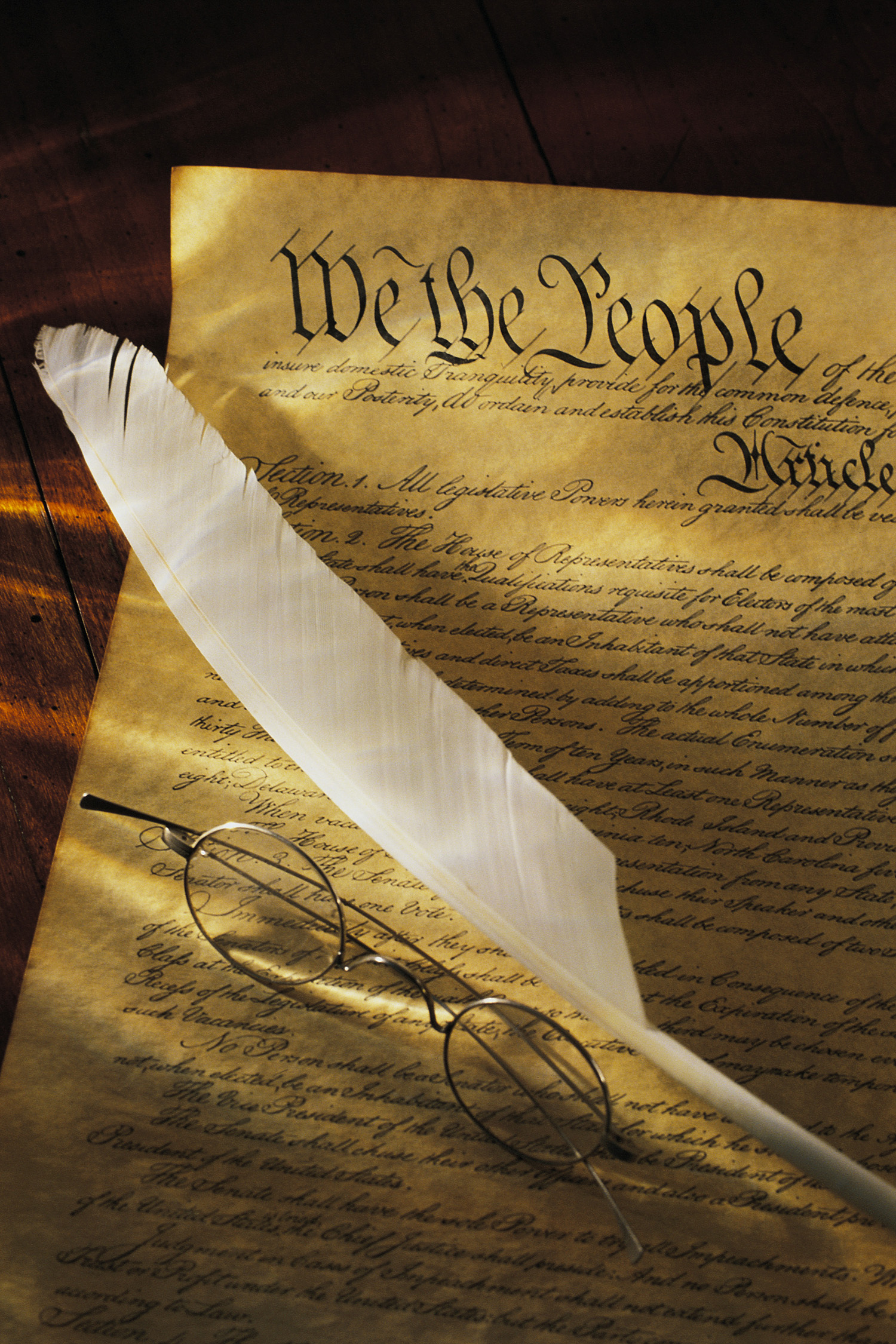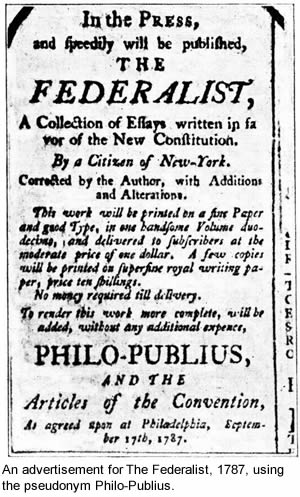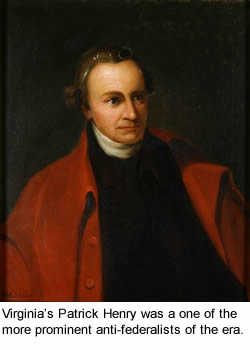Learn
To access the material on PBS Learning Media, you will need the PBS login information.
- Ratification of the Constitution
- Federalists vs. Anti-Federalists
- The Federalist Papers
- New Leaders Emerge
Ratification of the Constitution

The struggle to establish a new national government was not over at the end of the Constitutional Convention in 1787. The process of writing the Constitution had been tough, but the fight to make it the law of the land would be equally as challenging.
The Constitution specifies that at least nine of the existing thirteen states had to ratify, or approve the Constitution in order for it to take effect. Over the next several months, a bitter fight over ratification raged between Americans who supported the new Consitution and those who opposed it.
Read "Ratifying the Constitution" to learn more about ratification.
Federalists vs. Anti-Federalists
The bitter debate over ratification divided Americans into two factions, the Federalists, who wanted a stronger federal government and supported the new Constitution, and the Anti-Federalists, who wanted the state governments to retain most of the power to govern and did not support it.
Anti-Federalists
The Anti-Federalists feared a large national government would crush the state and local governments. They also felt a president would be no better than a king. Moreover, they feared the new government was so strong that it would infringe on the rights of the people. They sought the addition of a bill of rights to the Constitution to ensure protection of individual freedoms. The bill of rights is a formal summary of those rights and liberties considered essential to a people or rgroup of people. Perhaps the most famous anti-federalist was Virginian Patrick Henry. Henry, who refused to attend the Constitutional Convention because he thought the new Constitution granted too much power to the national government, was very influential in getting a bill of rights added to the Constitution.
Read "Anti-Federalists" to learn more about opposition to ratification.
Federalists
The Federalists wanted a strong national government as provided in the Constitution. They argued the Articles of Confederation had proven to be weak and ineffective, so there was an urgent need for a much stronger national government. Also, they were quick to point out that the new Constitution specified the separation of powers, which would limit the power of the national government.

Read "Federalists" to learn more about those who supported the Constitution and a strong central government.
Image credits: Matthews, George after after Sully, Thomas. Patrick Henry. c. 1891. Wikimedia Commons. [Image]. April 15, 2015; Trumbull, John. Alexander Hamilton. 1806. Wikimedia Commons. [Image]. April 15, 2015.
Read Anti-Federalist vs. Federalist for a comparision of the two view points.
The Federalist Papers

The Federalists were more organized in their efforts to persuade Americans to support and ratify the new Constitution. Prominent federalists Alexander Hamilton, James Madison, and John Jay wrote and published a series of essays promoting a strong central government. The essays were all signed with the fictitious name, Publius. The collection of the eighty-five essays is known as the Federalist Papers.
Watch Hamilton's Amerca: The Federalist Papers (1:25) to learn more about the essays that explain the meaning behind the Constitution.
The Federalists Succeed
In an effort to gain the support of the Antifederalists and get the new Constitution ratified, the Federalists agreed to add a bill of rights. Perhaps the biggest ally the Federalists had in their fight for the Constitution was George Washington, whose support was critical in helping win its ratification. The Constitution became the law of the land in June 1788 when New Hampshire became the ninth state to ratify it. Rhode Island was the last state to ratify the Constitution.
Image credit: An Advertisement of The Federalist. 1787. Project Gutenberg. Wikimedia Commons. [Image]. April 15, 2015.
New Leaders
In the winter of 1788-89, shortly after the Constitution was ratified, the delegates met to select a president. George Washington was unanimously elected as the first President of the United States. John Adams, who received the second-highest number of votes, was elected Vice President.
Washington surrounded himself with trustworthy advisors, later known as the Presidential Cabinet. Thomas Jefferson was named Secretary of State to handle relations with foreign countries. Alexander Hamilton was named Secretary of the Treasury. The national capitol was established New York City.
Image credit: Stuart, Gilbert. Portrait of George Washington. 1795. Metropolitan Museum of Art. Wikimedia Commons. [Image]. April 15, 2015.

